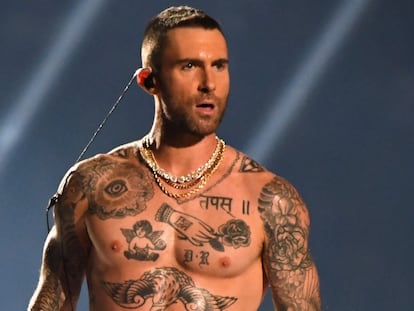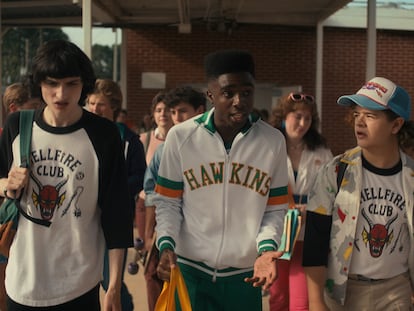Bill Murray isn’t funny anymore: How harassment allegations are ruining his career
Several performers, including Geena Davis, Lucy Liu, and Seth Green, have come forward about unpleasant incidents with the ‘Ghostbusters’ star
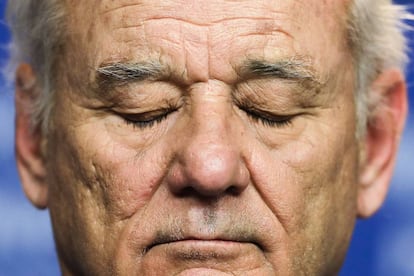
Bill Murray’s constant joking is no longer funny. Last week, a raft of complaints from former co-stars emerged about the American comedian, who is well-known for his roles in Ghostbusters, Groundhog Day and many Wes Anderson films. The new stories about the 72-year-old’s behavior coincided with news about his settlement with an assistant he allegedly harassed on the set of his latest film, Being Mortal, a production that was halted while the complaint was investigated.
The stoppage came on April 15, the same day an anonymous female worker told the film’s production company, Searchlight Pictures, that Murray had touched her inappropriately. After investigating the facts, the company (a Disney subsidiary) sent a letter to all crew members the following week. The missive closed as follows: “After reviewing the circumstances, it has been decided that the production cannot continue at this time.” On Monday, October 10, the website Puck broke the news that Murray had paid a “much younger” production assistant on the Being Mortal crew an out-of-court settlement of $100,000 after he tried to kiss and straddle her. The media outlet quotes a source from the film set, who described her co-worker as “horrified” that Murray’s actions “were purely sexual.”
In April, a witness on the set told Page Six, he “put an arm around a woman, touched her hair, pulled her ponytail – but always in a comedic way. It is a fine line, and everybody loves Bill, but while his conduct is not illegal, some women felt uncomfortable, and he crossed a line.” In May, Murray defended himself in an interview with NBC: “We had a difference of opinion; I had a difference of opinion with a woman I’m working with. I did something I thought was funny, and it wasn’t taken that way… You know what I always thought was funny as a little kid isn’t necessarily the same as what’s funny now. Things change and the times change, so it’s important for me to figure it out.” Indeed, Murray still behaves as he did a half century ago, both in terms of jokes and professionally: he doesn’t have an agent or assistant; to contact or hire him, Murray can only be reached through the answering machine on his landline.
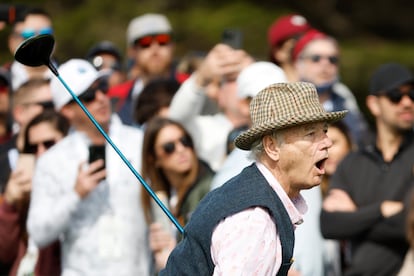
Many people in Hollywood circles believe that the production of Being Mortal will be shut down permanently. It’s cheaper for Disney to jettison the film, which was only in the middle stages of shooting. Moreover, the film already had an extra burden: comedian Aziz Ansari – who is returning to Hollywood after a woman he dated accused him publicly of sexual misconduct – wrote, produced, directed, and co-starred in the movie. However, on Saturday night, actress Keke Palmer insisted that everything was still up in the air and that the Being Mortal “script is gold,” although Ansari would need to do a “major rewrite” to remove Murray; she said that she would happily return to the set.
Making people laugh on the street
For decades, Murray has turned his life into a constant source of comedy by making surprise appearances at wedding banquets or fast-food restaurants and driving golf carts down the street at full speed. For years, he was known for his tardiness as well as his irascible and fickle personality. Actor Dan Aykroyd used to describe him as the Murricane (short for “Hurricane Murray”). Then social media came along, and the legend of Bill Murray transitioned into videos and online anecdotes about the comedian: he stole potatoes from a stranger’s bag while waiting to cross the street; made surprise appearances at college parties to do the dishes; delivered pizzas; reached into the pockets of passersby to give away money; and got arrested for driving a golf cart (while sober) in Stockholm in the wee hours of the morning... His fans loved it. Murray accompanied his antics with a recurring theme: “No one will believe you.” These shenanigans were recorded in Tommy Avallone’s 2018 documentary, The Bill Murray Stories: Life Lessons Learned from a Mythical Man, and in Gavin Edwards’s book The Tao of Bill Murray (2016), which explained that he “is teaching us all how to live through actions, not words.”
But it hasn’t all been fun. Last week, Lucy Liu recalled that while they were filming Charlie’s Angels, Murray blurted out, “Why are you here? You don’t know how to act,” causing the actress to explode in anger. Director McG claimed that, on the same film set, Murray headbutted him during an argument, a move the actor uses when he fights people. In her recently released memoir, Dying of Politeness, actress Geena Davis devoted several paragraphs to her bad experiences with Murray when making the movie Quick Change. During the filming, the actor insisted on using a device to give her a back massage; she refused the offer multiple times, but in the end, Davis gave in to avoid causing a scene. But that didn’t stop Murray from continuing to yell at her regularly in front of 300 people as they were shooting the movie. Later, when promoting Quick Change on television, Davis had another unpleasant encounter with Murray, who tried to pull down the straps of her dress live on the Arsenio Hall Show.
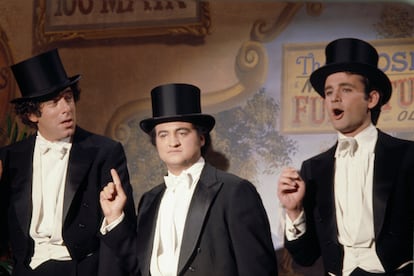
Murray began his comedy career with The Second City, the famed improvisational comedy troupe, where his delirious sense of humor was born. After leaving the Midwest to do radio in New York with John Belushi, another Second City member, he joined the legendary show Saturday Night Live (SNL) in 1977. Murray has returned to the revered show on numerous occasions since he left the cast in 1980.
On Thursday, October 13, Rob Schneider, a member of the SNL cast decades later, claimed on a radio show that the tension was palpable every time Murray returned as a guest on SNL. “He absolutely hated us,” Schneider recounted on The Jim Norton & Sam Roberts Show. There’s no “logical explanation for his hatred of the people on the show.” Schneider added that Murray had two main targets: Chris Farley and Adam Sandler. Murray also met a nine-year-old Seth Green on the NBC comedy show; at the time, the Lost in Translation actor was in his 30s. Until this Thursday, Green had never spoken publicly about his incident with Murray at SNL. On the online show Good Mythical Morning, Green recalled sitting in a communal dressing room and watching the performances on a screen. He was perched on the arm of a multi-seater couch, and Murray berated the boy for being in “my chair.” Green’s mother tried to mediate the situation, but Seth refused to move “because there were several lengths of this sofa.” At that point, Murray grabbed Green by the ankles, turned him upside down, carried him to a garbage can, shouted “the trash goes in the trash can” and, to the boy’s horror, dropped him in the bin.
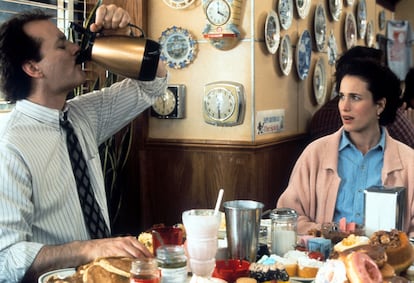
Some of these episodes were already public knowledge, while others are recent additions to a lengthy list of strange incidents. For instance, on the set of What About Bob?, Richard Dreyfuss proposed a change in the dialogue, prompting Murray to go “nose-to-nose” with Dreyfuss as he shouted, “Everybody hates you!” Murray then threw a glass ashtray at Dreyfuss and tried to punch him. The filming of the movie ended with a bodyguard’s constant presence on the set to restrain Murray. After half a dozen collaborations, Laura Ziskin, the producer of What About Bob?, decided to never work with Murray again after he threw her into a lake during an argument and broke her sunglasses. Murray’s fistfight with Chevy Chase, when the latter returned to SNL, was also highly publicized at the time.
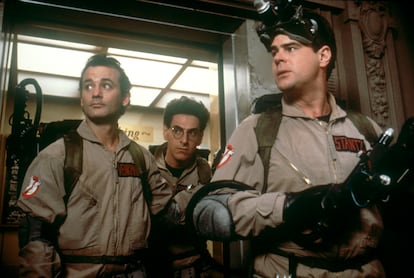
Murray’s fight with actor and director Harold Ramis, one of his best friends, was more painful. The two argued while filming Groundhog Day because Murray wanted to add an existential speech to the script’s dialogue, and the writer preferred to prioritize comedy. In addition, the comedian was in the middle of a divorce. Some days, he didn’t even show up to the set; other days, he only went there to cause trouble. “At times, Bill was just really irrationally mean and unavailable; he was constantly late on set. What I’d want to say to him is just what we tell our children: ‘You don’t have to throw tantrums to get what you want. Just say what you want,’” Ramis told the New Yorker in 2004. Then, as now, Murray didn’t have an assistant. The desperate production team recommended that he find one; Murray hired a deaf assistant, who only spoke in sign language, which nobody else on the set knew, including Murray. Ramis and Murray’s friendship was broken; according to Ramis’s daughter, Murray never wanted to speak to his fellow ghostbuster again. Then, one day in 2014, when Ramis was already very ill with cancer and unable to speak, just weeks before he died, Murray showed up at his old friend’s house to reconcile.
What will become of Murray’s career? He still has the loyalty of his friends. In addition to several indie titles and appearances in Ghostbusters reboots, most of the comedian’s work in recent years has come from three directors with whom he is very close: Sofia Coppola, Jim Jarmusch and Wes Anderson. Murray and Anderson have a particularly tight bond; Murray has appeared in all of Anderson’s films since Rushmore (1998), the director’s second feature film. Murray was also slated to appear in Anderson’s upcoming movie Asteroid City. The script had a part for the comedian, who even stayed at the Parador of Chinchón, a hotel near Madrid, for the shoot. However, Murray tested positive for Covid-19 and had to back out of the production. Beyond that, he has a small but unspecified role in the Marvel Universe film Ant-Man and the Wasp: Quantumania, now in post-production and due to hit theaters in February 2023. Murray doesn’t have any future projects lined up after that; it seems that his past misdeeds have caught up with him.
Tu suscripción se está usando en otro dispositivo
¿Quieres añadir otro usuario a tu suscripción?
Si continúas leyendo en este dispositivo, no se podrá leer en el otro.
FlechaTu suscripción se está usando en otro dispositivo y solo puedes acceder a EL PAÍS desde un dispositivo a la vez.
Si quieres compartir tu cuenta, cambia tu suscripción a la modalidad Premium, así podrás añadir otro usuario. Cada uno accederá con su propia cuenta de email, lo que os permitirá personalizar vuestra experiencia en EL PAÍS.
¿Tienes una suscripción de empresa? Accede aquí para contratar más cuentas.
En el caso de no saber quién está usando tu cuenta, te recomendamos cambiar tu contraseña aquí.
Si decides continuar compartiendo tu cuenta, este mensaje se mostrará en tu dispositivo y en el de la otra persona que está usando tu cuenta de forma indefinida, afectando a tu experiencia de lectura. Puedes consultar aquí los términos y condiciones de la suscripción digital.
More information
Últimas noticias
All the effects of gentrification in one corner of Mexico’s Colonia Roma
Palestinian reporter Youmna El Sayed: ‘My family told me I had to choose between being a journalist or a mother’
The new language of the workplace: Knowing how to ask AI questions is more important than using it
‘Sleepless City’: The light of cinema illuminates Madrid’s Cañada Real shantytown
Most viewed
- Families demand repatriation of bodies of Colombians who died in Ukraine: ‘This war is a slaughterhouse for foreigners’
- The low-cost creative revolution: How technology is making art accessible to everyone
- Liset Menéndez de la Prida, neuroscientist: ‘It’s not normal to constantly seek pleasure; it’s important to be bored, to be calm’
- Christian Louboutin: ‘Young people don’t want to be like their parents. And if their parents wear sneakers, they’re going to look for something else’
- ‘El Limones’ and the growing union disguise of Mexican organized crime

